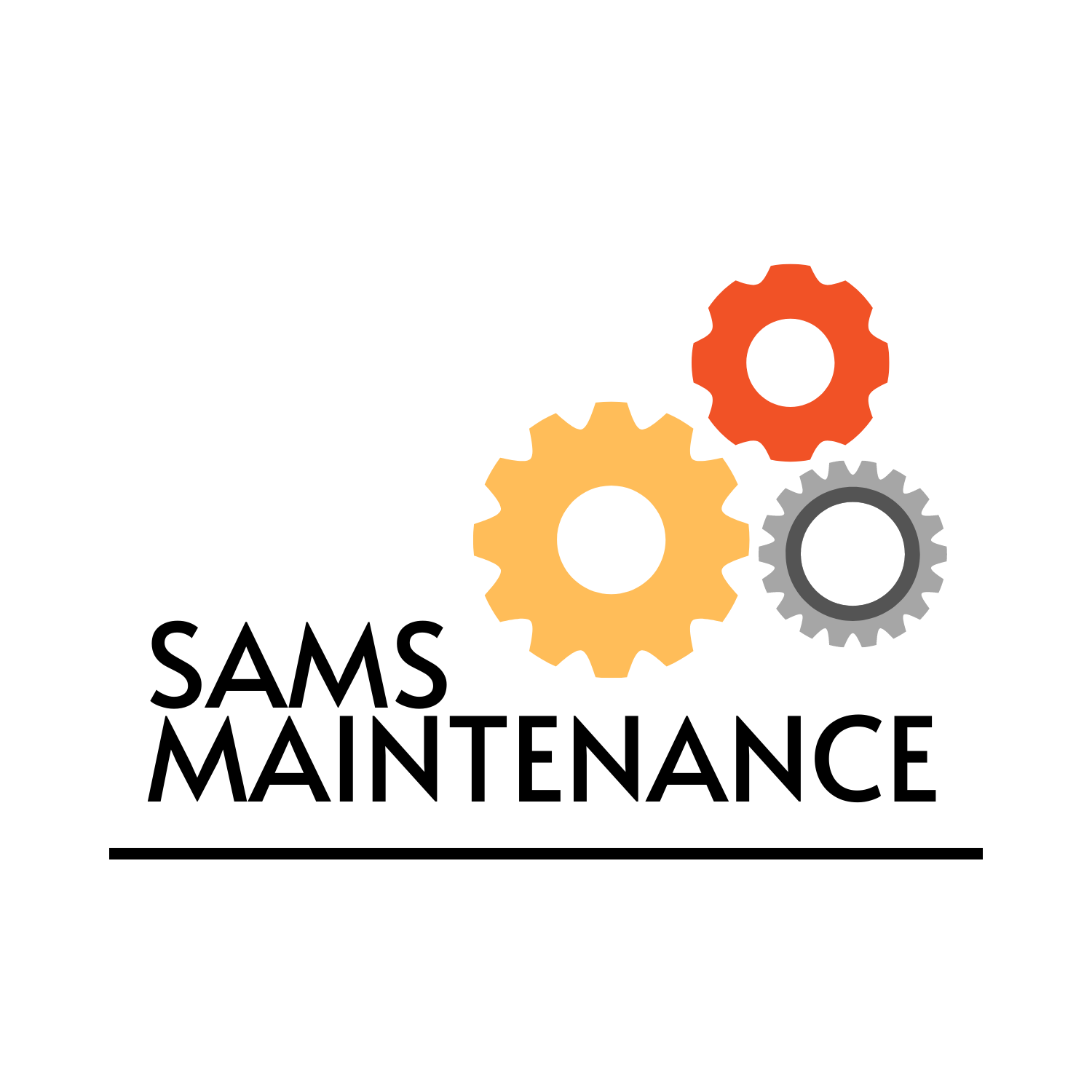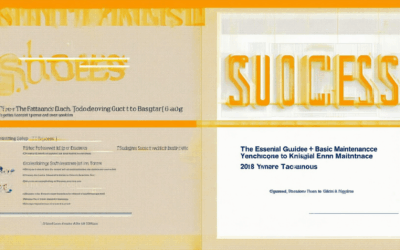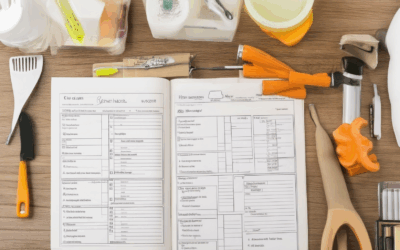Proper care and maintenance of your home or property can significantly extend its lifespan, save you money, and reduce stress. However, keeping track of all necessary tasks can feel overwhelming, especially when you’re managing multiple responsibilities. This is where a well-crafted DIY care checklist comes into play, offering a structured approach to staying organized and ensuring nothing gets overlooked. Whether you’re a homeowner looking to maintain your property or a caregiver responsible for managing daily tasks, having a comprehensive checklist can make all the difference. In this guide, we’ll walk you through creating a customizable DIY care checklist, exploring essential items to include, and providing tips on how to stay on top of your home maintenance routine. From weekly cleaning schedules to annual inspections, this checklist will help you tackle everything head-on while saving time and effort. Join us as we delve into the details of creating a checklist that works for you, your family, or your clients, ensuring your home remains in peak condition year-round.
Key Takeaways
– Stay Proactive with Home Maintenance: Develop a personalized schedule and use digital tools to track tasks like HVAC tune-ups and plumbing inspections.
– Budget Effectively Using the 1% Rule: Set aside 1% of your home’s value annually for maintenance to cover repairs and emergencies.
– Create a Comprehensive Maintenance Checklist: Organize tasks by area, from HVAC and plumbing to seasonal chores, ensuring nothing is overlooked.
– Understand Key Areas for Year-Round Care: Focus on systems, exteriors, safety features, and seasonal tasks to keep your home in top shape.
– Use Digital Tools for Efficiency: Install smart devices and set reminders to streamline maintenance tracking.
– Prioritize Repairs and Prepare for Emergencies: Address minor issues promptly and have a fund ready for unexpected costs.
– Consider Insurance for Added Protection: Review your policy to maximize coverage for maintenance-related expenses.

How to Create a Caregiver Checklist
A well-organized caregiver checklist can significantly enhance the quality of care provided to loved ones. Below is a step-by-step guide to crafting an effective checklist tailored to meet the unique needs of those requiring assistance.
- Communication Tools:
- A notebook or digital app for tracking important information about the person being cared for.
- Contact list including emergency contacts, doctors, and other relevant professionals.
- Health and Safety:
- A first aid kit with bandages, antiseptic wipes, and any necessary medications.
- Emergency contact list including local hospitals and nearest emergency services.
- Medical alert necklace or bracelet with important information.
- Personal Care Items:
- Toothbrush, toothpaste, and other personal hygiene products.
- Comfortable clothing and mobility aids if needed.
- Household Supplies:
- Cleaning products, laundry detergent, and dish soap.
- Essential cooking utensils and ingredients, including non-perishables.
- Medical Equipment:
- Spare parts for assistive devices like walkers or wheelchairs.
- Record of all medical devices and their maintenance schedules.
- Emotional and Mental Well-being:
- Access to counseling services or support groups.
- Stress management techniques and self-care activities.
- Legal and Financial Matters:
- Durable power of attorney and healthcare proxy forms.
- Financial records and insurance documents.
- Transportation Needs:
- Reliable vehicle and car seat if required.
- Public transportation options and maps.
- Customized Care Plan:
- Tailored schedule for medication reminders and personal care.
- Advance directive and palliative care plans.
- Community Resources:
- Local organizations offering senior services or respite care.
- Government resources for caregivers and older adults.
- Technology Integration:
- Medication tracking apps and remote monitoring systems.
- Online forums and educational resources for caregivers.
- Regular Check-ins:
- Weekly meetings to discuss the person’s needs and preferences.
- Flexibility to adapt the routine based on their mood and ability.
Regular Home Maintenance Checklist
Keeping your home in great shape requires consistent effort. Here’s a comprehensive guide to regular home maintenance tasks that will help preserve your property and ensure longevity:
Plumbing System
- Clean drain screens to prevent clogs caused by hair, soap buildup, and debris.
- Check for slow draining in sinks and bathtubs, which may indicate pipe blockages.
- Inspect for visible leaks or water damage around pipes and fittings.
Heating, Ventilation, and Air Conditioning (HVAC)
- Change air filters monthly to maintain indoor air quality and efficiency.
- Clear vents and ductwork to ensure proper airflow and prevent blockages.
- Inspect ducts for dust buildup or mold growth and clean as needed.
Appliance Care
- Clean refrigerator coils quarterly to prevent energy waste and odor.
- Run dishwasher with a cleaning cycle weekly to prevent mold buildup.
- Flush hot water heater annually to remove sediment and extend its lifespan.
Electrical Systems
- Check circuit breakers for overheating or frequent tripping.
- Inspect outlets for tripping hazards and ensure GFCI protection in high-risk areas.
- Examine lighting fixtures for loose wires or connections.
Exterior Maintenance
- Gutter clean-out twice a year to prevent water overflow and damage.
- Inspect roof for missing shingles and damaged flashing.
- Chimney inspection for cracks or blockages, especially if in use.
- Paint or repair decks and fences to maintain structural integrity.
Fire Safety
- Test smoke detectors monthly and replace every 10 years.
- Check fire extinguishers for functionality and expiration dates.
- Create and practice a fire escape plan with your family.
Flooring and Carpets
- Clean grout lines between tiles to prevent mold growth.
- Vacuum area rugs weekly and shampoo carpets as needed.
- Check for loose tiles or uneven surfaces.
Landscaping
- Prune trees and shrubs to maintain health and prevent damage.
- Control weeds promptly to avoid infestation.
- Dethatch lawns to promote grass growth and reduce soil compaction.
Windows and Doors
- Inspect windows for cracks and peeling paint.
- Operate sliding doors and locks to ensure functionality.
- Clean blinds and curtains to prevent dust accumulation.
Personal Safety
- Test smoke detectors, carbon monoxide detectors, and security systems.
- Inspect emergency exit routes for obstructions.
Water Systems
- Check water pressure for unusual drops, indicating potential pipe issues.
- Test water softness to prevent mineral buildup on appliances.
Garage Door and Foundation
- Inspect garage door tracks and springs for alignment and wear.
- Check foundation for cracks or shifts in the ground.
Garden Tools
- Maintain garden tools by cleaning and storing properly.
- Sharpen blades to ensure effective cutting and pruning.
Organize a monthly maintenance schedule to tackle these tasks systematically. Prioritize major systems like HVAC and plumbing to avoid costly repairs. Use tools like drain snakes and ladders for easier access. Stay informed by consulting reliable resources or joining homeowner forums for tips and warnings. Regular maintenance not only saves money but also extends the life of your home and belongings.

How to Write a Care Checklist
To create an effective care checklist, follow these organized steps:
- Prepare for Care Tasks
- Review the manual or guide for the item or system you’re caring for.
- Gather necessary tools and materials needed for the task.
- Create a care kit with essentials like gloves, masks, and cleaning supplies.
- Establish Daily Cleaning Routine
- Vacuum carpets and mop floors regularly.
- Wipe down surfaces, including countertops and bathrooms.
- Check for leaks or water damage after cleaning.
- Conduct Regular Inspections
- Examine windows and doors for cracks or drafts.
- Test smoke detectors and carbon monoxide alarms.
- Inspect the roof for missing shingles or damaged areas.
- Perform Scheduled Maintenance
- Service HVAC systems, including air filters and ductwork.
- Check plumbing for leaks and ensure water pressure is stable.
- Schedule regular appliance maintenance to prevent breakdowns.
- Handle Emergencies
- If a pipe leaks, shut off the water supply immediately and contact a plumber.
- In case of appliance failure, disconnect it and schedule repair service.
- During a power outage, locate circuit breakers and reset them safely.
- Finalize and Review
- Double-check all tasks to ensure nothing is overlooked.
- Keep records of maintenance activities for future reference.
By following this checklist, you can maintain the health and longevity of your home effectively. For additional tips and resources, explore guides from trusted sources like Sams Maintenance or similar platforms focused on home care.

How to Keep Track of Home Maintenance
To maintain the health and longevity of your home, it’s essential to stay organized and proactive with regular checks and updates. Here’s a step-by-step guide to help you keep track of your home maintenance effectively:
1. Create a Comprehensive Maintenance Schedule
- Develop a calendar or checklist tailored to your home’s unique needs. Mark important tasks like HVAC tune-ups, gutter cleaning, and plumbing inspections.
- Use apps or digital tools to sync your schedule for easier management.
2. Regularly Inspect for Leaks and Damage
- Check pipes, faucets, and windows for signs of wear or damage. Address issues early to prevent costly repairs.
- Examine roofing materials for missing shingles or cracks, especially after severe weather events.
3. Conduct Annual Home Inspections
- Perform a thorough inspection of your property at least once a year. This includes examining the foundation, attic, and exterior walls for signs of deterioration.
- Use a checklist to ensure nothing is missed during your inspection.
4. Stay Informed About Safety Guidelines
- Review local building codes and safety standards to ensure your home meets current regulations.
- Update electrical systems and fire safety measures as needed to comply with new standards.
5. Utilize Technology for Tracking
- Install smart home devices to monitor systems like HVAC, security, and plumbing remotely.
- Set up reminders for routine tasks through your smartphone or calendar app.
By following these steps, you can maintain your home in excellent condition, ensuring longevity and safety. Remember to always consult professional services when dealing with complex repairs or renovations.
What is the 1% Rule for Home Maintenance?
The 1% rule for home maintenance is a simple yet effective strategy to budget for unexpected repair costs. Here’s a breakdown:
- 1% Rule Calculation: Set aside 1% of your home’s purchase price annually for maintenance. This covers repairs, replacements, and unexpected issues.
- Example: For a $300,000 home, 1% is $3,000 annually or approximately $250 monthly.
- Why It Matters: Homes require regular upkeep, and the 1% rule helps prepare for unforeseen expenses without overwhelming you financially.
### Additional Considerations
- Appliance Breakdown: Major appliances like HVAC systems or refrigerators often fail, requiring immediate attention. The 1% rule helps cover these costs.
- Emergency Preparedness: Natural disasters or accidents can lead to costly repairs. Having a maintenance fund eases the financial burden during crises.
- Customizing Your Budget: Adjust the 1% based on your home’s unique needs. For example, homes with septic tanks or specialized systems may require more funds.
### How to Create a Maintenance Budget
- Track Expenses: Keep a record of all maintenance-related costs to better understand your spending habits.
- Prioritize Repairs: Address urgent issues first, such as leaky pipes or electrical problems, before moving on to routine upgrades.
- Consider Insurance: Some home insurance policies cover certain maintenance costs. Review your policy to maximize benefits.
For more insights and tools to manage your home maintenance budget, visit our maintenance resources . Also, explore tips and guides on HomeAdvisor and Fixer Upper for additional inspiration and practical advice.

How to Create a Maintenance Checklist
To ensure your property remains in excellent condition, follow these steps to develop a comprehensive maintenance checklist:
1. Identify Key Areas
- Systems: HVAC, plumbing, electrical, and appliances
- Exterior: Roof, walls, fences, and decks
- Safety features: Smoke detectors, carbon monoxide detectors
- Seasonal tasks: Lawn care, gutter cleaning
- Tools and supplies: Organization and maintenance
2. List Specific Tasks
- HVAC: Check air filters, test heating and cooling systems
- Plumbing: Inspect pipes for leaks, clear drains
- Electrical: Examine sockets, switches, and wiring
- Appliances: Test refrigerators, ovens, and vacuums
- Exterior: Look for roof damage, peeling paint, and loose fencing
- Safety: Test smoke detectors, monitor CO levels
- Seasonal: Trim trees, clean gutters, fertilize lawns
- Tools: Organize and store tools properly
3. Schedule Regular Checks
- Monthly: HVAC filters, appliance function
- Quarterly: Plumbing, electrical systems
- Seasonally: Exterior inspections, lawn care
4. Prioritize Repairs
- Minor issues: Fix leaks, replace light bulbs
- Major repairs: Call professionals for complex problems
5. Update the Checklist
- Add new tasks as needed
- Remove outdated or irrelevant items
Conclusion
A well-organized maintenance checklist ensures your property stays in top shape. Regularly update and follow this checklist to prevent issues before they become costly problems.




0 Comments